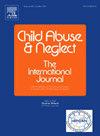Longitudinal impacts of adverse childhood experiences on multidimensional health outcomes: Predicting trajectories in mental, physical, and behavioral health
IF 3.4
2区 心理学
Q1 FAMILY STUDIES
引用次数: 0
Abstract
Background
Adverse childhood experiences (ACEs) elevate the risk of poor health later in life.
Objective
This study aims to provide a more comprehensive investigation of the multidimensional health risks associated with ACEs, to address a gap in the understanding of their longitudinal impact on mental, physical, and behavioral health domains.
Participants and setting
This study included 6, 504 participants (51.61 % females) from the National Longitudinal Study of Adolescent to Adult Health (1994–2018).
Methods
We utilized latent class growth analysis to identify trajectories from adolescence to adulthood in three health domains: depression (Mental Health, MH), self-report physical health (SRH), and binge drinking frequency (BDF). Binary logistic regression was then used to assess the unique contributions of different types of ACEs to these longitudinal health trajectories.
Results
Three to four trajectories were identified for MH (consistently low, decreasing, increasing), SRH (consistently low, decreasing, increasing, consistently high), and BDF (consistently low, decreasing, moderate). Regression results showed that experience of emotional abuse and witnessed community violence elevated the risk associated with unfavorable trajectories in the mental health and behavioral health domains, respectively.
Conclusions
Individual ACEs differentially predicted mental, physical, and behavioral health trajectories, potentially through various pathways. Prevention of ACEs could mitigate health risks for adolescents and young adults across these domains.
童年不良经历对多维健康结果的纵向影响:预测心理、身体和行为健康的轨迹。
背景:不良的童年经历(ace)会增加以后生活中健康状况不佳的风险。目的:本研究旨在提供更全面的与不良经历相关的多维健康风险调查,以解决其对心理、身体和行为健康领域纵向影响的理解空白。参与者和环境:本研究包括来自全国青少年至成人健康纵向研究(1994-2018)的6,504名参与者(51.61%为女性)。方法:我们利用潜在类别增长分析来确定从青春期到成年的三个健康领域的轨迹:抑郁(心理健康,MH),自我报告身体健康(SRH)和酗酒频率(BDF)。然后使用二元逻辑回归来评估不同类型的不良经历对这些纵向健康轨迹的独特贡献。结果:确定了MH(持续低、减少、增加)、SRH(持续低、减少、增加、持续高)和BDF(持续低、减少、中等)的三到四种轨迹。回归结果显示,情感虐待和目睹社区暴力的经历分别增加了与心理健康和行为健康领域不利轨迹相关的风险。结论:个体ace可能通过多种途径预测心理、身体和行为健康轨迹。预防ace可以减轻青少年和年轻人在这些领域的健康风险。
本文章由计算机程序翻译,如有差异,请以英文原文为准。
求助全文
约1分钟内获得全文
求助全文
来源期刊

Child Abuse & Neglect
Multiple-
CiteScore
7.40
自引率
10.40%
发文量
397
期刊介绍:
Official Publication of the International Society for Prevention of Child Abuse and Neglect. Child Abuse & Neglect The International Journal, provides an international, multidisciplinary forum on all aspects of child abuse and neglect, with special emphasis on prevention and treatment; the scope extends further to all those aspects of life which either favor or hinder child development. While contributions will primarily be from the fields of psychology, psychiatry, social work, medicine, nursing, law enforcement, legislature, education, and anthropology, the Journal encourages the concerned lay individual and child-oriented advocate organizations to contribute.
 求助内容:
求助内容: 应助结果提醒方式:
应助结果提醒方式:


